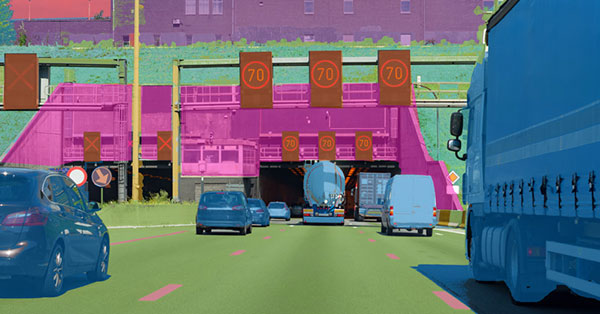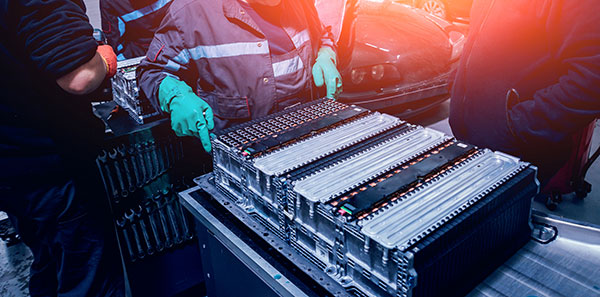Digital Product Design and Development Predictions
Exploring the frontiers of design engineering technology.

Deep learning with Matlab. Image courtesy of MathWorks.
December 17, 2018
The intersection of digital technology and product development was a wide open frontier in 2018. Artificial Intelligence and its subsets Deep Learning and Neural Networks are driving digital automation across industries. Machine Learning is approaching mainstream adoption. Battery life is seen as a make-or-break issue for advancing not just transportation but every application where power requirements are mobile, and the issues are as much digital as they are electrochemical.
To explore how new digital technologies will affect product development in 2019, we sought input on how data, connectivity, embedded design and human factors will shape the future of design engineering.
Data Will Work Harder
Engineers will drive the advancement of deep learning into product development, while continuing to rely on data scientists for new algorithms and applications. “New workflows are simplifying and automating synthesis, labeling, tuning, and deployment, thus making AI accessible beyond data scientists,” says Bruce Tannenbaum, Product Marketing Manager of Artificial Intelligence for MathWorks. “Technical curiosity, business imperatives to reap the promise of AI, and automation tools will empower more engineers and scientists to adopt AI.”
Alina Ignatiuk, engagement manager and Alexander Sychov, principal data scientist at AI provider Fractal Analytics agree. Listing democratization of AI as one of their predictions for 2019. “The power of non-experts to use and replicate AI technologies will increase,” they write. “This will be enabled by the number of educational programs designed for non-tech specialists, applications with user-friendly interfaces for AI developers and higher salaries and interest in AI products on the market. Such democratization will help to increase the exposure of AI technologies and literally bring them to each household and enable ‘the masses/wider community’ to take advantage of that and improve quality of life. At the same time, tech-oriented companies will still face the shortage in skilled specialists that are able to work on and develop break-through innovations in this field.”
Interoperability will still be critical to assembling a complete AI solution; there is no single framework that can provide every intelligent routine required by product development. “Each deep learning framework tends to focus on a few applications and production platforms,” notes Tannenbaum. “Effective solutions require assembling pieces from several different workflows.” Standards organizations and firms that specialize in AI for product development are coming together, allowing engineers to freely choose the best tool and deploy solutions to a wider set of production platforms
“With a digital thread of information feeding back into product design, engineers will finally be able to 'talk' to their products and answer some of their most burning questions,” writes Kevin Wrenn, who heads the PLM Segment at PTC. “Whether they’re determining how well the product is functioning in the field or trying to identify which features and functions of the product customers are actually using, the digital thread of information coming back to form a complete digital twin will allow engineers to close the loop in the product lifecycle.”
Embedded Products, Embedded Services
Battery power is both a key advancement and a key bottleneck in product development. In automotive, battery electric vehicles (BEVs) will become more numerous, especially on the smaller end of the vehicle spectrum.

“Although BEVs with larger batteries tend to dominate the trade press, we predict an increasing market for electric vehicles with small batteries in the foreseeable future, primarily for urban driving,” says Dunstan Power, a director at ByteSnap Design, a UK-based embedded electronics consultancy.
Several factors will contribute to the growth of small-battery BEVs, Power says. Average trip distance will decrease, resulting in more frequent charging needing less power at each charge. Batteries are dropping in price as control technology improves at the rate of 15% energy density per year. Total vehicle weight will continue to decrease as a byproduct of better design, increased use of 3D printing and other lightweighting techniques, resulting in smaller batteries. It all becomes a virtuous cycle: “A smaller battery means a lighter car, which results in additional cost savings in the car chassis, brakes, charging tech, and motor power,” says Power.
Expect more machine learning technology to be embedded in 2019, says Seth DeLand, product marketing manager for data analytics at MathWorks. “Companies will increasingly use machine learning algorithms to enable products and services to learn from data and improve performance. In the coming year, it can be expected that machine learning will be increasingly present as more companies are inspired to integrate machine learning algorithms into their products and services.”
DeLand also foresees an increase of embedded intelligence for predictive maintenance. “Human employees need a way to monitor the performance of automated machines to minimize unnecessary downtime or surprise failures or accidents,” he says. Engineers and scientists can synthesize, collect, and analyze data that contains valuable information about the health of a machine, “then use that data to train a predictive maintenance model that will predict remaining useful life and alert employees when failure is imminent.” DeLand also says this technology will become more prevalent “in tandem with the rise of industrial automation.”
Embedded intelligent applications mean increased decentralized computation, also know in the language of Industry 4.0 as edge computing. Tannenbaum of MathWorks says edge computing will enable AI applications in individual products. “Edge computing will be critical to safety in autonomous vehicles that need to understand their local environment and assess driving options in real time. This has promise to yield huge cost savings for remote locations with limited or expensive internet connectivity, like deep sea oil platforms.”
Connectivity in the Key of 5G
2020 is the target year for many full-scale deployments of 5G connectivity technology, which means 2019 will be a busy year for engineers to meet product deadlines. 5G is much more than a new standard for cellular telecommunications; it will become a standard for internet of things-enabled products, autonomous vehicles and other new products that require extremely fast data transmission. (See “5G-based Product Development,” DE, June 1, 2018).
“The launch of 5G in 2018, and the rollout of 5G-enabled ‘edge’ devices such as smartphones, hotspots, gateways and IoT devices in 2019, will accelerate the ability to perform analytics in a hybrid or distributed architecture; enabling a new breed of commercial and consumer use cases for AI,” says Doug Hillary, Fractal Analytics strategic adviser and board member.
Ericsson, one of the leading providers of information and communication technology to service providers, has about 40% of the world’s mobile traffic carried through its networks, has already signed 5G commercial deals.
“In 2019 will see more widespread deployment of 5G networks, which will directly result in the emergence of new and interesting use cases for the technologies associated with Industry 4.0,” says Warren Chaisatien, global director of IoT customer engagement marketing at Ericsson. “5G will enhance the capabilities of edge computing, which will be particularly important to certain technologies like self-driving cars, where computing must be performed as close to the device as possible.”
Chaisatien says the list of emerging technologies “ready to cut the cord” is long, including “robots, drones, manufacturing, public safety and emergency and government services.”
Increased connectivity will impact more than consumer applications, says ByteSnap Design’s Power. It will “take a greater foothold in industry, construction, and other more traditional vertials, rather than being mainly consumer-driven.” Expansion in “the more slow-moving industries” will be fueled by “the normalization of connected technologies in society,” says Power, along with “a reduction in the perception of risk associated with their adoption.”
The Human Element
Collaboration will increase in 2019 as more design engineering and manufacturing realize the benefits of tighter integration and technologies make it easier for them to work together.
“Waiting for engineering to completely finish their part in the product lifecycle delays the prework that manufacturing can get done,” writes PTC's Wrenn. “In addition, small changes by the engineering team can have a large impact on production. With automated manufacturing process planning, the production team can get a head start on what they need to do and automatically see the most up-to-date product information—decreasing the time-to-market and reduce costs associated with rework.”
For that to happen, the right data needs to go to the right people at the right time. Software products will begin to guide users along a path toward greater collaboration, even if they are not experts in data science.
“Many companies struggle to find data science expertise,” says MathWorks’ DeLand, which is adding new tools for working with AI and other new data sources to their products. “Because these engineers and scientists have existing process and business knowledge, they will be well-situated to apply data science techniques, assess the results, and determine the best way to integrate models with business systems.”
Staff engineers also need to be ready for the transition from delivering products to delivering services through manufactured products. “In 2019 we will see more momentum in businesses changing their models from selling products to selling services,” says Jeff Travers, head of IoT connectivity management for Ericsson. “We can expect more companies to start offering not just a product, but the function that product provides, as a service.”
Organizations won’t buy just a pump, but rather the service it performs. “This will also cause those business to change from charging for a product, to charging for a subscription the capability,” adds Travers.
For such a profound business model transformation to occur, “all those devices will need to be connected so that lifecycle and performance can not only be monitored but predicted,” he says.
Fractal Analytics’ Ignatiuk and Sychov see the development and spread of AI applications and technologies becoming a two-way street with “issues with privacy of personal data, increasing invasion of personal privacy, and increasing psychological manipulation by using more implicit, psychologic and behavioral data” competing with customers having “better variety and quality of services and products” as well as “breakthrough products and services that will lead to the next level of living standards.”
Subscribe to our FREE magazine, FREE email newsletters or both!
About the Author
Randall S. Newton is principal analyst at Consilia Vektor, covering engineering technology. He has been part of the computer graphics industry in a variety of roles since 1985.
Follow DE





